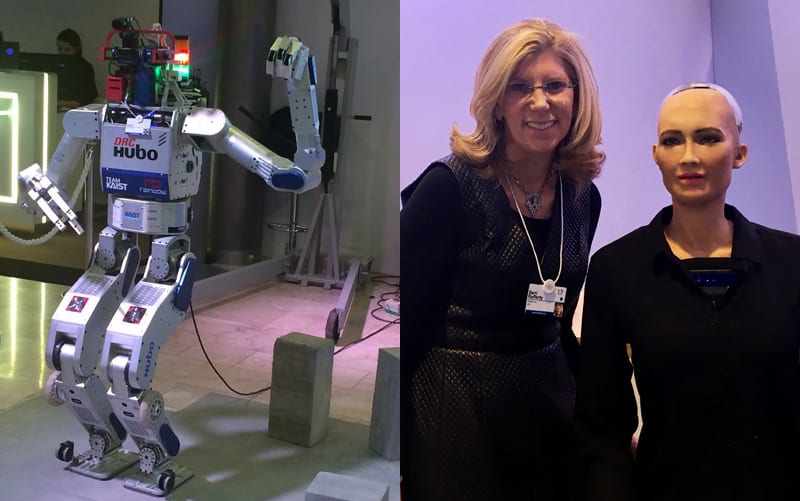My tablet possesses processing power equivalent to 5,000 desktop computers from 30 years ago. The average adult in the U.S. consumes more than 10 hours of digital media per day. Sensors are connecting the physical world to virtual networks. AI software is engaging us daily under the names Alexa, Siri, Cortana and Google Home. Since the World Economic Forum introduced the concept of the Fourth Industrial Revolution at Davos last year, I’ve noticed tremendous leaps in the technology that’s already a part our daily lives, and the innovations that are just around the corner.
Here are a few of the big tech trends making waves in Davos this year:
Robots that look like us and have a sense of humor.
At the Loft Hub, near the Congress Center, I met Sophia, an incredibly life-like humanoid robot. She was developed by Hanson Robotics and has 62 realistic facial expressions based on a combination of CEO David Hanson’s wife and one of his favorite actresses, Audrey Hepburn. She interacts with people, mimics their facial expressions and even cracks jokes. Last year I “met” a robot named HUBO that walks and can even do chores, but I was struck by just how far the technology has come in the last year. Check out the side-by-side photos to see for yourself.
The democratization of space services. It’s a new kind of space race as private companies are looking to be the first to offer regular galactic tourism services – to those who can afford it, at least. Virgin Galactic is now licensed by the FAA, and SpaceX is now launching reusable rockets, which reduces cost and space debris. We’re now capable of launching satellites the size of cell phones.
The potential for job loss as artificial intelligence becomes more mainstream. According to a 2016 report by Citibank and Oxford University, 57 percent of jobs around the world are at risk of being replaced by automation within the next 25 years. Within the marketing industry, we’re already seeing bots that can write press releases and buy and sell digital media. Our creativity is harder to replicate, but it’s difficult to predict just how sophisticated AI technology will become in the coming years.
Just as with last year, technology is everywhere in Davos. From VR and holograms to AI and 4D printing, I’m getting a glimpse into the very near future here this week and, for the most part, the future is looking bright!

